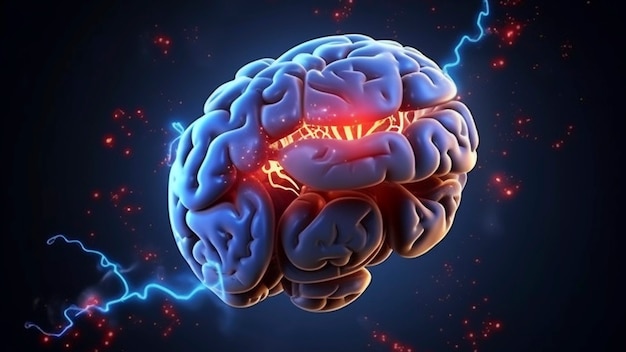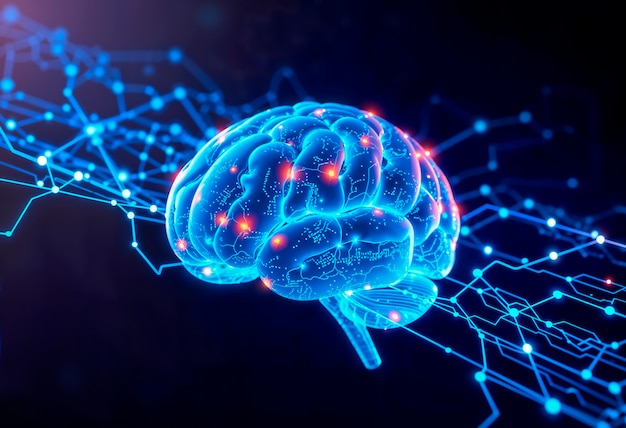New research uncovers a direct brain circuit that links acute stress to rapid increases in blood glucose—bypassing traditional hormonal pathways.

When we experience stress, our bodies respond in complex ways. One well-known effect is a rise in blood sugar levels, a response long believed to be driven by hormones like adrenaline and cortisol from the adrenal glands, along with changes in insulin and glucagon from the pancreas. However, groundbreaking studies in mice have revealed a surprising alternative pathway—one that operates independently of these classic hormonal signals.
Researchers have identified a neural circuit originating in the brain’s medial amygdala and projecting to the ventral hypothalamus that directly controls glucose production in the liver during acute stress. This discovery reshapes our understanding of how the brain regulates metabolism and opens new avenues for treating stress-related metabolic disorders.
For decades, scientists have understood that stress activates the sympathetic nervous system and the hypothalamic-pituitary-adrenal (HPA) axis. This leads to the release of adrenaline and cortisol, which prompt the liver to convert stored glycogen into glucose, thereby increasing blood sugar. Simultaneously, insulin secretion may be suppressed, further elevating glucose levels.
While this hormonal model explains much of the metabolic response to stress, it doesn’t account for how quickly blood sugar can rise—sometimes within minutes—before hormone levels significantly change. This timing gap suggested the presence of a faster, more direct mechanism.
Recent experiments in mice have uncovered a neural circuit that provides this rapid response. Using advanced techniques like optogenetics and chemogenetics, scientists selectively activated neurons in the medial amygdala (MeA), a brain region involved in processing emotional stimuli such as fear and stress.
They found that stimulating the MeA triggered immediate hyperglycemia—elevated blood glucose—within minutes. Even more strikingly, this effect persisted in mice whose adrenal glands had been removed or whose pancreatic hormone function was pharmacologically blocked. This proved the response was independent of adrenaline, cortisol, insulin, and glucagon.

The study traced the pathway from the medial amygdala to the ventral part of the hypothalamus (VMH), a region known to regulate energy balance and glucose homeostasis. Neurons in the MeA send projections to the VMH, which in turn communicates with the liver via the autonomic nervous system—specifically, the sympathetic nervous system.
This brain-liver axis allows the central nervous system to rapidly initiate glucose production in the liver without waiting for hormonal signals. The liver responds by breaking down glycogen and producing new glucose through gluconeogenesis, effectively fueling the body for a 'fight or flight' response.
While these findings come from mouse models, they have significant implications for human physiology. Chronic stress is a known risk factor for insulin resistance, type 2 diabetes, and metabolic syndrome. If a similar brain-liver circuit exists in humans, it could explain why stressed individuals often exhibit poor glucose control—even in the absence of overt endocrine dysfunction.
Moreover, this discovery suggests that targeting neural pathways—rather than just hormones—could offer new therapeutic strategies. For example, neuromodulation techniques or drugs that selectively inhibit this circuit might help manage stress-induced hyperglycemia in diabetic patients.
One of the most revolutionary aspects of this research is that it demonstrates a metabolic response to stress that bypasses the adrenal glands entirely. This challenges the long-held belief that stress-induced hyperglycemia is solely a hormonal phenomenon.
It also highlights the brain’s role as a central regulator of metabolism, not just through slow hormonal feedback loops, but via fast, hardwired neural connections. This positions the nervous system as a first responder in metabolic regulation during psychological and environmental challenges.
Scientists are now working to confirm whether this exact circuit exists in humans. Advanced neuroimaging and metabolic studies may help map similar pathways. Additionally, researchers are exploring how chronic stress might alter the sensitivity of this circuit, potentially leading to long-term dysregulation of glucose metabolism.
Other questions include how this pathway interacts with feeding behavior, circadian rhythms, and other stress responses. Could mindfulness, meditation, or cognitive behavioral therapy modulate this circuit and improve glucose control? These are promising areas for future investigation.
The discovery of a medial amygdala–ventral hypothalamus circuit that directly controls liver glucose production during stress represents a major advance in neuroscience and metabolism research. It reveals that the brain can drive blood sugar changes through rapid neural signaling, independent of adrenal or pancreatic hormones.
This finding not only deepens our understanding of the mind-body connection but also opens new doors for treating metabolic diseases influenced by stress. As we continue to unravel the brain’s role in regulating physiology, we move closer to more holistic and effective healthcare solutions.

Health

Health

Health

Health

Wellness

Health

Health

Health

Health

Wellness

Wellness

Health

Health

Fitness

Health

Health